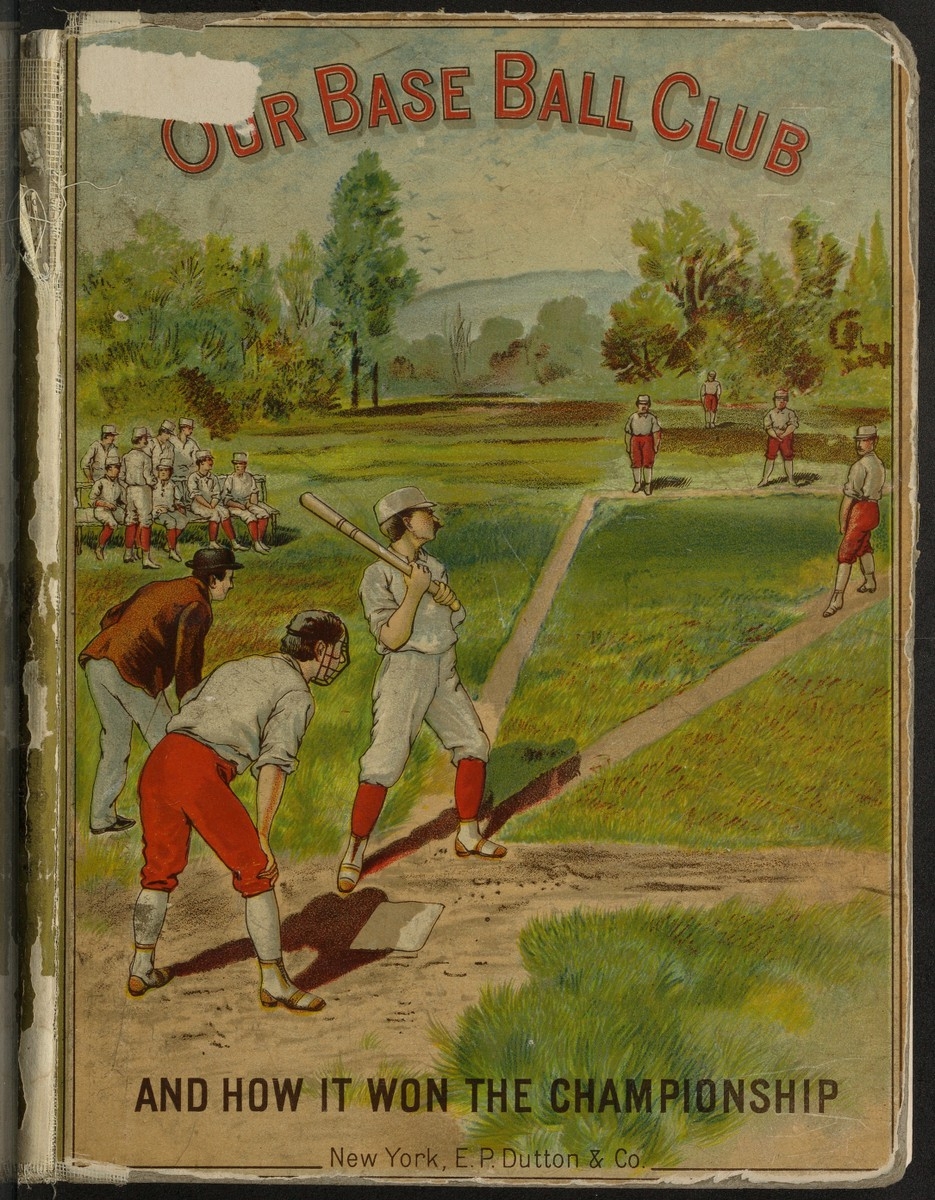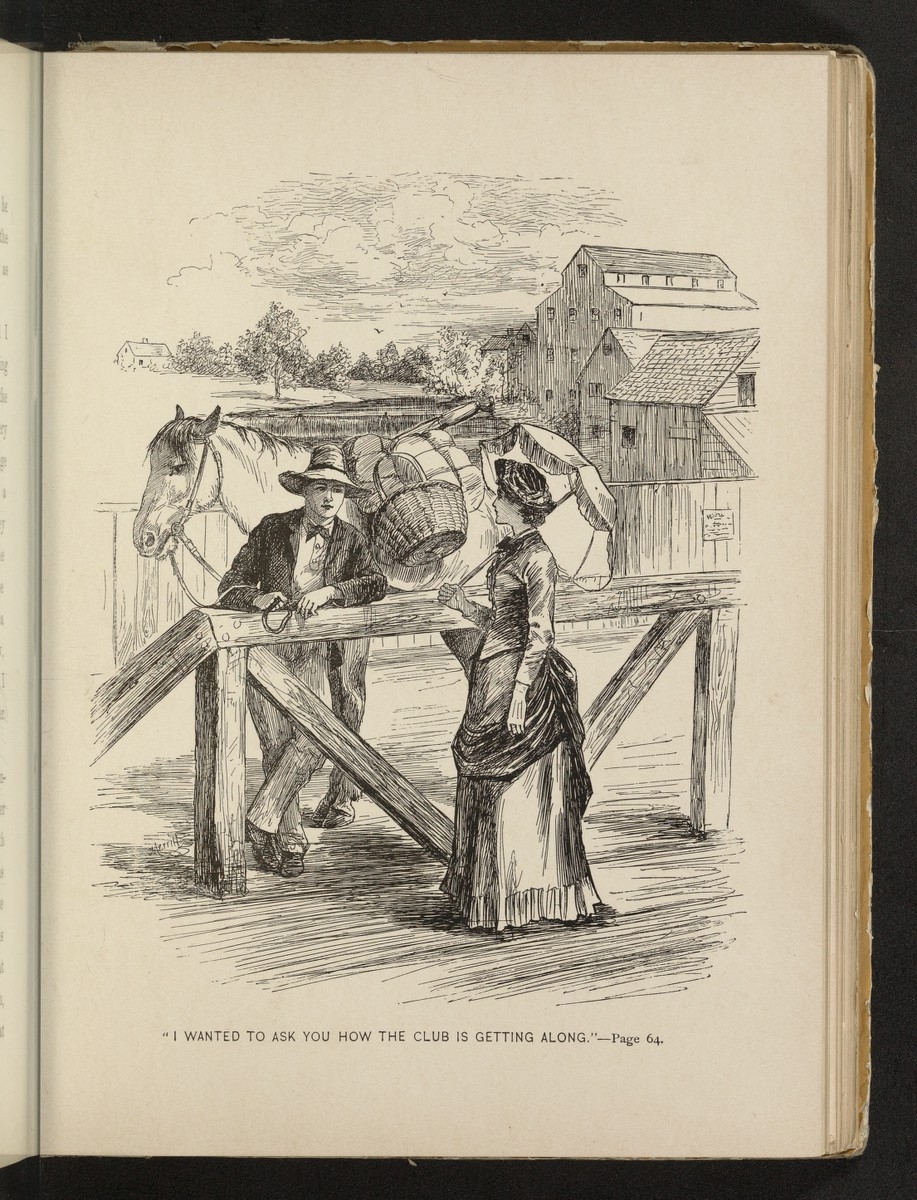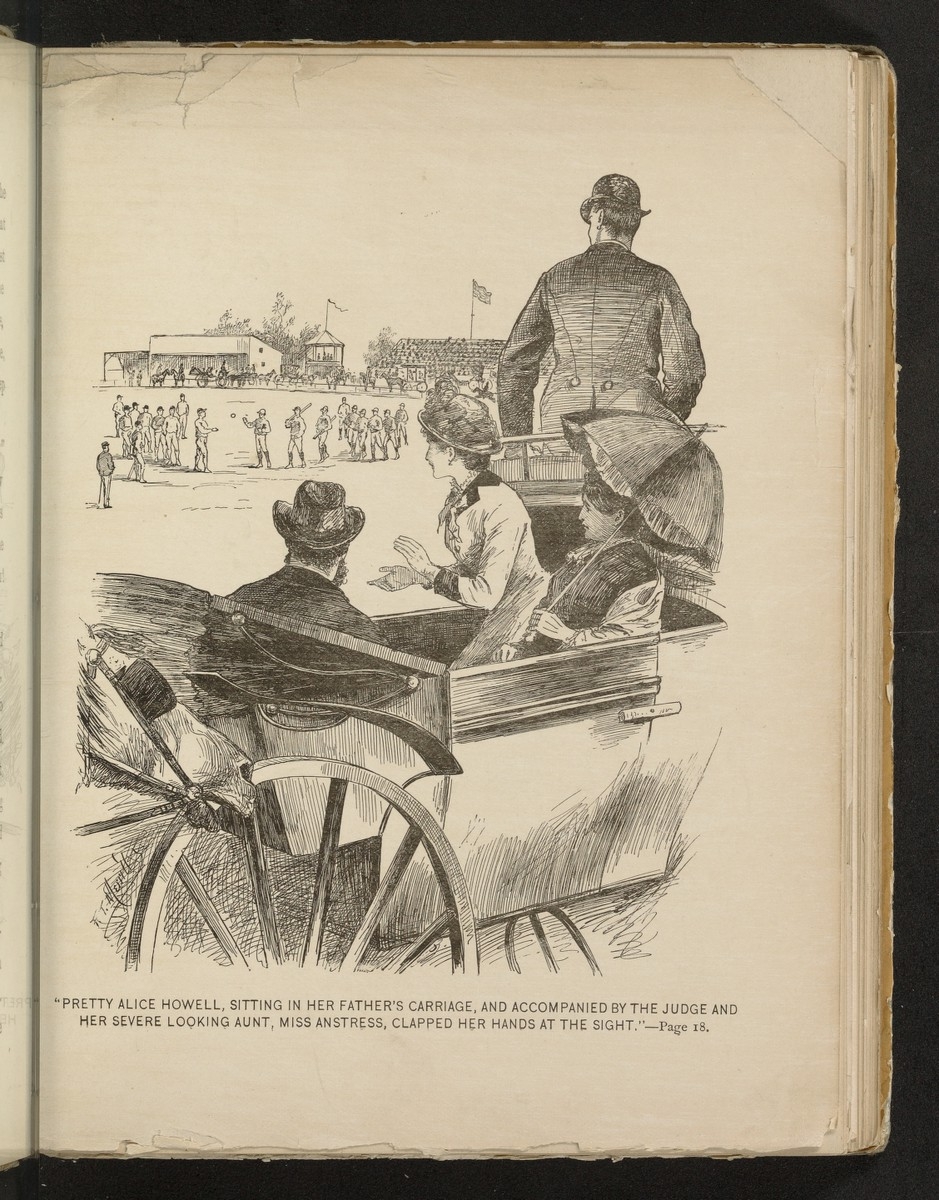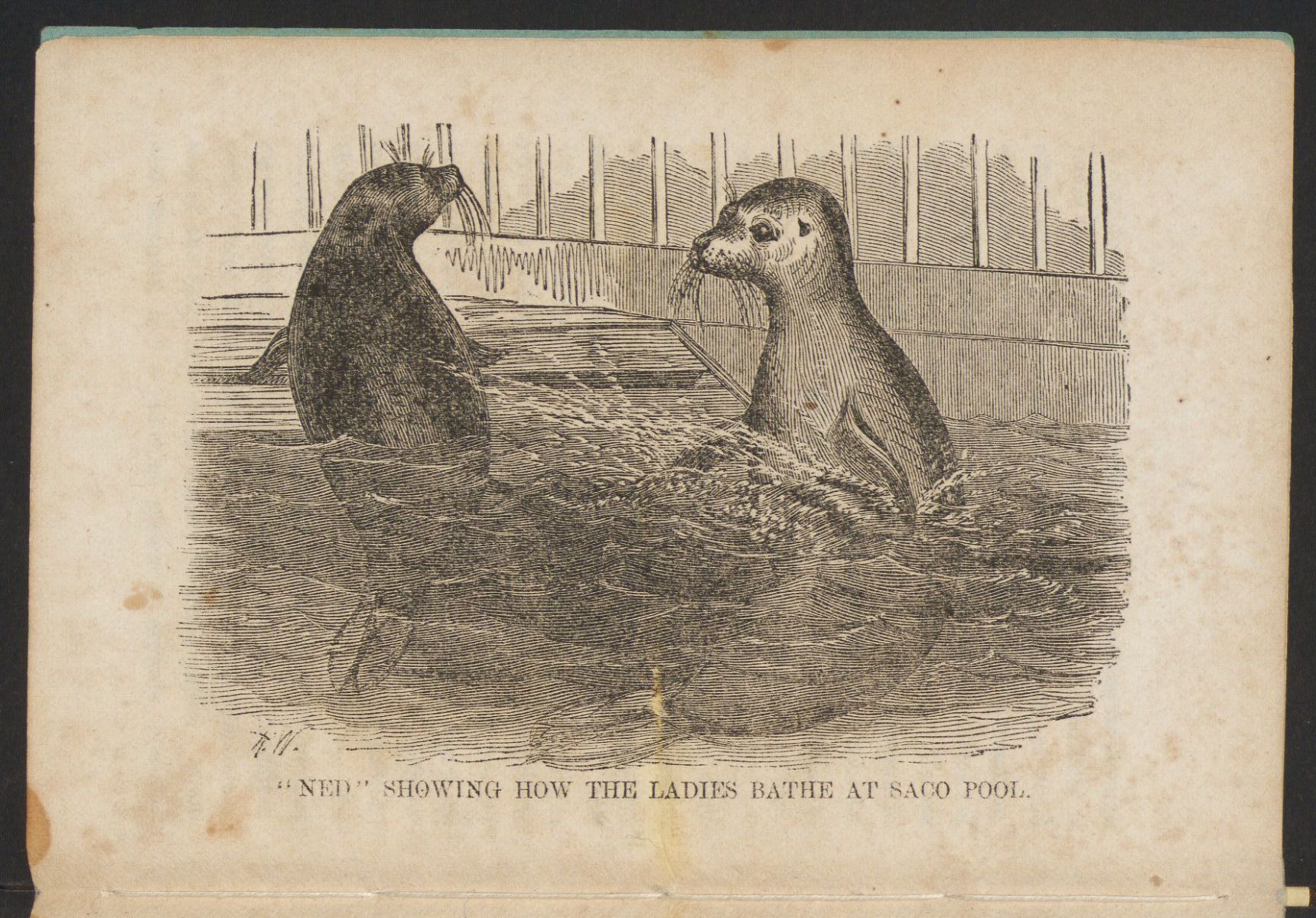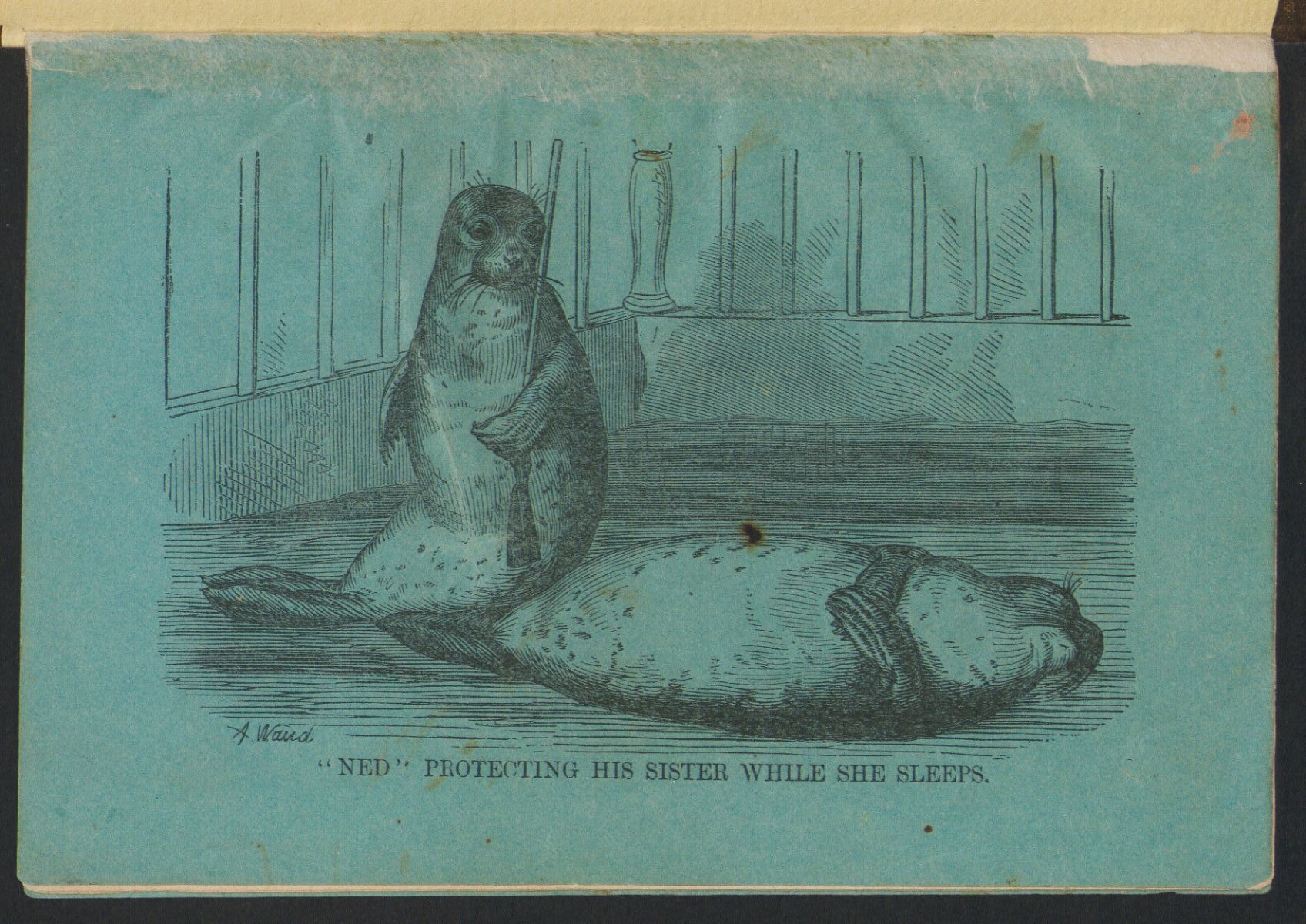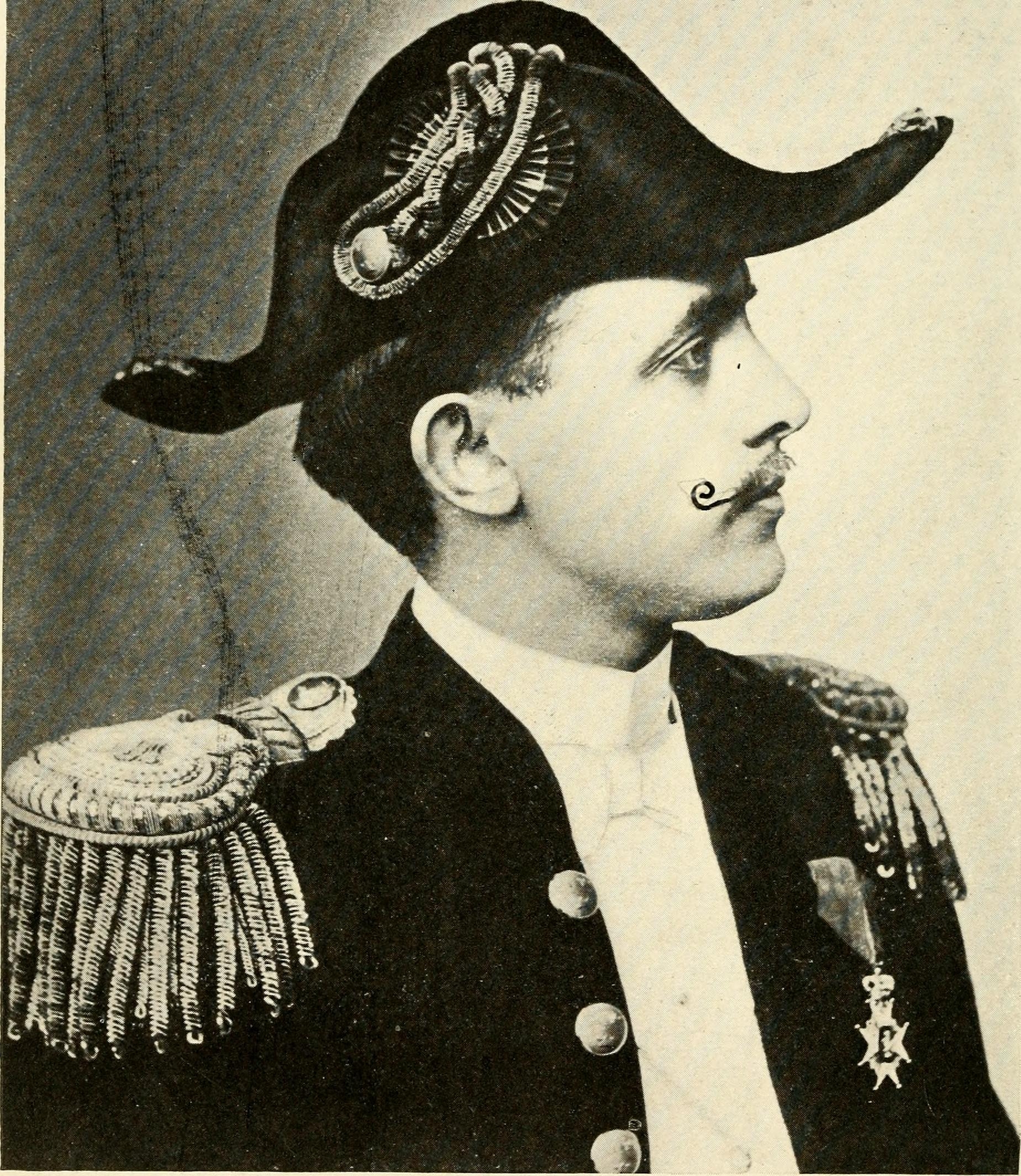The First Baseball Novel
Aug 1st, 2018 by bachmann
Noah Brooks (1830 – 1903) is most notable as a journalist, editor, and early biographer of Abraham Lincoln. In fact, he was a close friend of Lincoln and a regular visitor to the White House. Brooks was even invited to the presidential box at Ford’s Theatre the night Lincoln was assassinated, though he was unable to attend due to an illness. Seemingly trivial in comparison to his work on Lincoln, Brooks is also credited with writing the first novel about baseball in 1884. The novel is set in a manufacturing town near Chicago, just after the Civil War, where the two local teams debate whether “training” or “muscle” is more important for building a great baseball team. In the end, they concede both methods are necessary for success and agree to play their common rival in a major event. Al Spalding, former pitcher and sporting goods magnate, provides an introduction to the novel where he praises the author for his accurate and faithful portrayal of the game.
When we consider how strong a hold the pastime of base ball playing has upon our people, it is a little surprising that more frequent use of the game, as a framework, has not been made by writers of fiction. There are very few Americans, certainly very few of the younger generation, who are not only familiar with the nomenclature and rules of base ball, but are enthusiastic lovers of the sport. Even among the gentler sex, who may be regarded as spectators only of the game, there is to be found much sound information and an intelligent acquaintance with the details of base ball playing; while every hearty and wholesomely taught boy knows everything worth knowing about the game, the famous players, the historic contests, and the notable features of the sport, as practiced in various sections of the republic. To write an introduction to a story whose slender plot should be threaded on a base ball match seems to be an almost superfluous work. But I am glad that Mr. Brooks has undertaken to illustrate “The National Game” by a story of outdoor life. –A.G. Spaulding
While the storyline is rather banal, the novel does surface some interesting cultural aspects of baseball in America during the 1860’s, including the role of women, post-war anxiety, and the prevalence of gambling. Baseball was growing fast and facing some big debates about the integrity of the game and amateurism versus professionalism.
Some scandal was created by the appearance of Hank Jackson on the street with a roll of bills, offering to make bets on the game. It had never been the custom of anybody in Catalpa to wager anything on a base ball game, and there was some frowning now on the part of conservative and upright people; and those who were not specially conservative, but who disapproved of gaming.
Since the outbreak of the war, when everybody was scraping lint, making “comforts” for the soldiers, or marching to the front, there had not been so hot a fever of enthusiasm in Catalpa. The soldiers of this new campaign were the lusty young heroes up in the Agricultural Fair Grounds who were doing battle, every day, with imaginary foes and making ready to face the real antagonists who could not now be very far off; for the base ball season would open in a few weeks.
Alice Howell was flattening her pretty nose against the window pane as she looked ruefully out into the misty atmosphere that surrounded her father’s house in North Catalpa. It was eight o’clock in the morning, and the great base ball match was set for two o’clock, that afternoon. As soon as she had risen, Alice had run to the window to see what were the signs of the sky, for Alice was an ardent lover of the American game, and her heart was set on the great match that was to come off on the Agricultural Grounds, near Catalpa, that day.
The literary news: a monthly journal of current literature. [New York, N.Y.]. vol.5, 1884.:
[The publishers] have shrewdly taken advantage of the very widespread interest in the national game of baseball that now prevails to publish a novel based upon the subject. Its title is “Our Baseball Club, and How It Won the Championship,” and its author is Noah Brooks, a well-known journalist, and the writer of one or two successful boys’ stories. The present is a tale which will interest the boys throughout the land, but it is not exclusively a boys’ book. Mr. Brooks is evidently familiar with the game, and this is only another way of saying that he genuinely admires it. He well appreciates the capabilities that it has for being utilized in fiction, and has made a very successful employment of them for that purpose. There are the points of a good love story connected with the plot, and there is also a picture given of the dramatic contests for supremacy, the tricks resorted to by the less honorable players, who scheme for defeat, and of everything, in short, that is necessary to unfold the panorama of ball-playing to the public. The work has enough of literary flavor to make it interesting without being pretentious in this connection.
- Description:
- Brooks, Noah 1830-1903 author. Our base ball club and how it won the championship. New York : E.P. Dutton and Company, 1884.
- Persistent Link:
- http://nrs.harvard.edu/urn-3:FHCL:29575707
- Repository:
- Widener Library
- Institution:
- Harvard University
